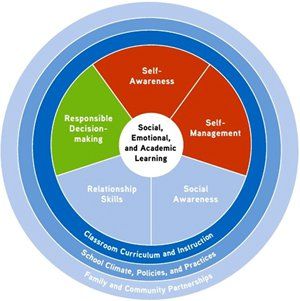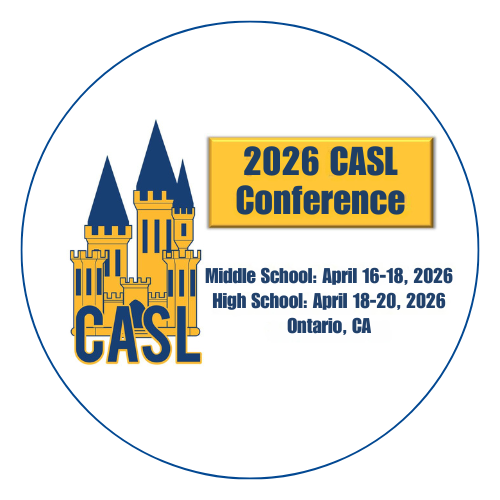Funding Sources
Funding Sources for CADA Programs
- This past year congress passed three stimulus bills providing over $190 billion to elementary and Secondary Emergency Education Relief (ESSER) fund through the CARES Act. Your school district has options for applying the funds, one is for Social Emotional Learning (SEL) initiatives. Money can be used to provide mental health services and supports, purchasing educational technology to support and improve remote learning and Professional development for teachers and administrators on behavioral and emotional issues. You need to ASK!
- The Local Control Funding Formula already targets additional funding to school districts based on the enrollment of four groups of students identified as needing additional services. They are low-income, foster and homeless students and English learners. Under the formula, every district gets the same base funding per student. On top of that, a district gets a “supplemental grant” equal to 20% of the base grant for every high-needs student. You need to ASK!
- American Rescue Plan Act (ARPA) will add $15.3 billion in assistance to California's K-12 schools to combat the pandemic and the recession. Money must be used on Covid-related learning and school reopening expenses.
- Local site budget - be part of your site counsel to understand how these funds are allocated for professional development. You need to ASK!
- Local Control and Accountability Plan (LCAP) - The LCAP is a three-year plan that describes the goals, actions, services, and expenditures to support positive student outcomes that address state and local priorities. You need to ASK!
Local Support for SEL Programs and Practices
Although a growing body of evidence shows that social and emotional learning (SEL) is essential for student growth, finding ways to fund SEL programs can be challenging. For schools seeking funding options, identifying local, state, and federal sources can help ensure the long-term sustainability of SEL programs.
5 Keys to Successful SEL
Research shows that SEL not only improves achievement by an average of 11 percentile points, but it also increases prosocial behaviors (such as kindness, sharing, and empathy), improves student attitudes toward school, and reduces depression and stress among students (Durlak et al., 2011). Effective social and emotional learning programming involves coordinated classroom, schoolwide, family, and community practices that help students develop the following five key skills:

Image credit: http://secondaryguide.casel.org/casel-secondary-guide.pdf
Self-Awareness
Self-awareness involves understanding one's own emotions, personal goals, and values. This includes accurately assessing one's strengths and limitations, having positive mindsets, and possessing a well-grounded sense of self-efficacy and optimism. High levels of self-awareness require the ability to recognize how thoughts, feelings, and actions are interconnected.
Self-Management
Self-management requires skills and attitudes that facilitate the ability to regulate one's own emotions and behaviors. This includes the ability to delay gratification, manage stress, control impulses, and persevere through challenges in order to achieve personal and educational goals.
Social Awareness
Social awareness involves the ability to understand, empathize, and feel compassion for those with different backgrounds or cultures. It also involves understanding social norms for behavior and recognizing family, school, and community resources and supports.
Relationship Skills
Relationship skills help students establish and maintain healthy and rewarding relationships, and to act in accordance with social norms. These skills involve communicating clearly, listening actively, cooperating, resisting inappropriate social pressure, negotiating conflict constructively, and seeking help when it is needed.
Responsible Decision Making
Responsible decision making involves learning how to make constructive choices about personal behavior and social interactions across diverse settings. It requires the ability to consider ethical standards, safety concerns, accurate behavioral norms for risky behaviors, the health and well-being of self and others, and to make realistic evaluation of various actions' consequences.
Local government funding for school programs can come from a variety of sources (such as general fund revenues, through an agency budget, or from dedicated revenues such as taxes). In particular, K-12 education relies heavily on local revenues, which on average contribute approximately 44 percent to the education budget (Johnson et al., 2011), with these dollars drawn mostly from local property taxes. While such funds may be available, it is also important that school boards, superintendents, and local policy makers are well informed about the value of SEL programs to allocate resources accordingly. Toward that end, cultivating relationships with SEL providers, child-serving agencies, educators, and advocates helps build awareness and support.
Here are three examples of how local funds were used to support SEL implementation:
- The Preventive Health and Health Services (PHHS) block grant (Centers for Disease Control and Prevention, 2013b) addresses public health needs through prevention and health promotion programs. Although typically used for chronic disease prevention, activities related to SEL have also received support from this source. For example, in 2009 the Health Department of Barron County, Wisconsin, partnered with local schools to implement substance abuse curricula with strong SEL components (CDC, n.d.).
- In Lyndhurst, Ohio, where over 85 percent of the school district budget depends on local tax dollars, voters passed an extension for a levy on residential properties that would generate about $4.5 million annually to support educational programming over the next three years (Support SEL Schools, n.d.). Energetic community-based advocacy promoting the benefits of SEL interventions led to the successful passage of the levy.
- The Boston Public Health Commission coordinated a two-year project with Boston public schools and Partners HealthCare, a nonprofit hospital system that invested $1 million to fund the collaborative project. The purpose of the project is to help students manage their emotions and cultivate healthy relationships. Together, these partners are implementing Open Circle, an evidence-based SEL program in 23 Boston public schools (Wellesley Centers for Women, 2012).
State Support for SEL Programs and Practices
The largest portion of funding for public elementary and secondary schools, approximately 47 percent, comes from state dollars (Johnson et al., 2011). Although there is variability across states, education funding is generated by a combination of income, corporate, and sales taxes plus other fees. In states that do not collect income taxes, there is often greater reliance on local revenues. Regardless of the revenue source, however, each state has its own formula for financing K-12 education, based largely on the priorities set by the state board of education. Board members are typically appointed by the governor and approved by the state legislature, although several states elect or have a combination of elected and appointed members (National Association of State Boards of Education, 2013). Identifying members of the board can help target advocacy efforts by influencing individuals with budgeting authority to support SEL programming.



